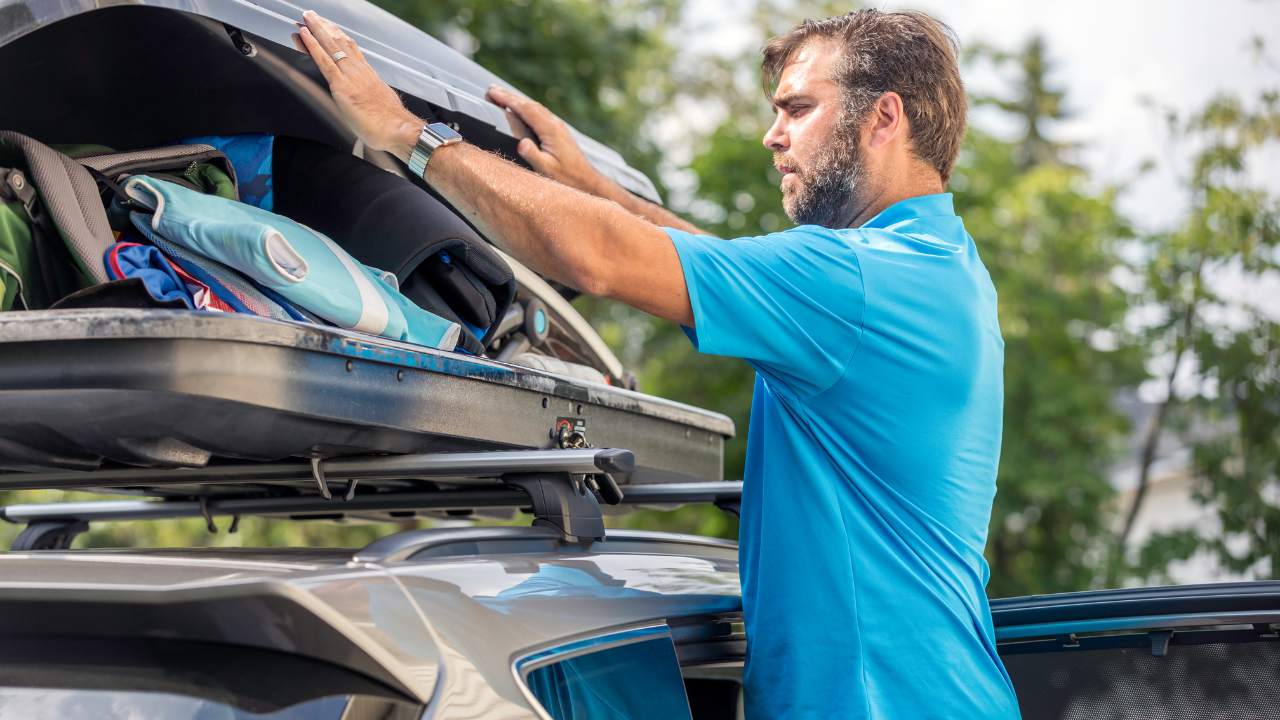When it comes to transporting bulky gear such as kayaks, bicycles, SUPs, surfboards, and more, a robust roof rack becomes a necessity. Not only does it provide a secure solution for hauling our larger equipment, but it also offers an ideal mounting place for a roof-top tent, adding an element of adventure to our journeys.
But do you know how much weight can a roof rack hold? It may come as a surprise that the roof capacity of most contemporary sedans, SUVs, and crossovers is limited to 165 pounds. So, if you want to increase the roof rack capacity, what do you do? Well, in short answer, consider adding more crossbars within the manufacturer’s limits and, if possible, upgrade to a stronger system like Thule or Yakima for enhanced load-holding ability.
Here’re some steps to follow to increase the capacity of your roof rack.
- Inspect The Existing Roof Rack
- Add More Crossbars
- Elevated Rail System
- High-Quality Roof Rack
Inspect The Existing Roof Rack
This is very important. You need to check the manufacturer’s specifications to determine the what is the maximum roof rack capacity. Say you drive an SUV, so you have to be aware of your SUV roof weight limit. Keep in mind that exceeding this limit can compromise safety and stability.
Add More Crossbars
Adding extra crossbars can enhance the load-holding ability of your roof rack to a certain extent. When you add more crossbars to your roof rack, it can increase the overall load capacity to some extent. By distributing the weight more evenly across multiple crossbars, the roof rack becomes more capable of carrying heavier loads. Crossbars attach to the roof rails and go from side to side, serving as the mounting point. If your car doesn’t have roof rails, Yakima and Thule offer crossbars that attach to the roof’s edge. However, it is important to consider the mounting strength of the factory track if you are attaching the additional crossbars to it
Elevated Rail System
By using an upgraded Thule or Yakima crossbar system in combination with the elevated rail, you can enhance the overall strength of your roof rack. For example, vehicles like the 4Runner, feature an elevated rail system that tends to be stronger. And for older vehicles with an aluminum track mounted flush to the roof, it is recommended to discard the factory track and install new Thule tracker feet through the roof. This involves drilling, but it provides a solid base for mounting the Thule tracker crossbar system. Installing four crossbars using this method can significantly increase your roof rack’s weight-holding capacity, ensuring it can handle rigorous off-roading without the risk of failure.
High-Quality Roof Rack
If you want to increase the capacity of your roof rack, you need to get yourself a solid roof rack, that can support the maximum weight. Thule and Yakima are well-known brands that offer reliable roof racks. In this instance, Thule racks may be preferred due to their sturdier construction. Yakima racks tend to incorporate more plastic components, making them more susceptible to breaking. Additionally, when mounting cargo racks, such as a load warrior, the square Thule bars provide better stability compared to round bars, reducing the chances of movement or sliding under heavy loads, particularly during off-road adventures. You can also check out the Rhino-rack.
How Can I Make My Roof Rack More Secure?
What happens if you put too much weight on a roof rack?
Well, a number of things can happen. It can affect the performance and stability of the vehicle, and it can even result in accidents. You don’t want your roof rack coming off in the middle of driving. You need to get the best roof racks for your vehicle and here’re some of the things you can do to secure the roof rack even more:
- Stack items on the roof rack evenly and position them in the center of the doors. This helps maintain balance and stability while driving.
- Place heavier items at the bottom and lighter items on top to create a more stable load distribution.
- Do not exceed the dynamic or static weight capacity of the vehicle.
- Cover the entire load with a tarp or netting to prevent any loose items from falling out during transit.
- Use ratchet or cam straps to tie the roof rack through the vehicle’s doors, avoiding the windows for a secure attachment.
- When securing large items like canoes or bicycles, be aware that they can catch the wind and create additional stress on the roof rack. To counter this, strap the item down not only to the roof rack but also to the car itself. This extra precaution can prevent potential roof rack failure at high speeds with strong updrafts.

Static Vs. Dynamic Roof Rating
When it comes to increasing roof rack capacity, weight distribution is an important factor. And in order to understand that properly you need to know about static and dynamic roof ratings. Dynamic roof rating refers to the maximum amount of weight that can be safely carried on the roof while the vehicle is in motion. Whereas, the static weight capacity is the maximum amount of weight that can be safely carried on the roof while the vehicle is not in motion. Moreover, a vehicle’s dynamic weight capacity is lower than the static one. So, before you increase the capacity of your roof rack, check the vehicle manual and get an idea about its static and dynamic weight capacity. This will help your vehicle from getting unbalanced.
The Lighter The Better!
Whilst roof racks offer a convenient storage option for your gear, you need to think about the impact of weight distribution. Try to keep the weight on the roof as light as possible. Not only will your car handle better, but you’ll also reduce the risk of rollovers and alleviate strain on the roof structure. Moreover, roof racks are particularly well-suited for storing lightweight items like bicycles, kayaks or canoes, ski or snowboard equipment, surfboards or paddleboards, luggage or travel bags, or even camping gear.

William Arrovo seeks thrills and laughter in everything he comes across. He is a fun loving person with a zest of exploring the breathtaking places around the globe. He feels content in sharing his experiences of travelling to various countries. He is grateful about enriching himself with a myriad of cultures and rejuvenating his soul while staying outdoors.









Leave a Comment